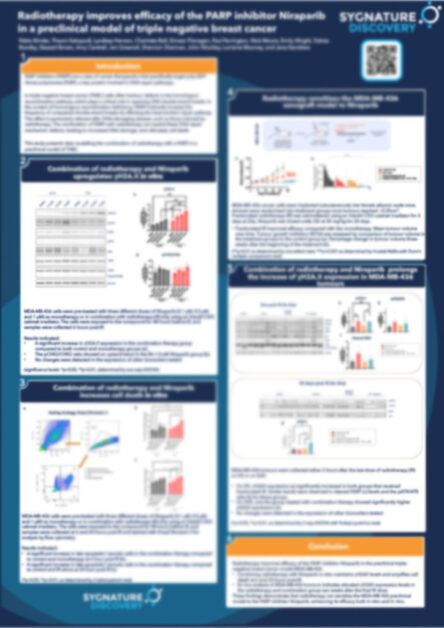Radiotherapy improves efficacy of the PARP inhibitor Niraparib in a preclinical model of triple negative breast cancer
PARP inhibitors represent a powerful class of cancer therapies that target poly-ADP-ribose polymerase (PARP)- a key enzyme in DNA repair. In triple-negative breast cancer (TNBC), where cells often have defects in the homologous recombination (HR) DNA repair pathway, PARP inhibitors offer a strategic vulnerability.
This poster from Sygnature Discovery explores how combining niraparib, a clinically approved PARP inhibitor, with radiotherapy further exploits this vulnerability to increase therapeutic efficacy in a preclinical TNBC model.
Scientific Background
PARP inhibitors work by interfering with base excision repair, which becomes critical in HR-deficient cells. Without functional HR, these cells accumulate unrepaired double-strand breaks- particularly after exposure to DNA-damaging treatments like radiotherapy.
By combining PARPi with radiation, the synergy increases DNA damage beyond repair, promoting cell death and enhancing tumour control. This combination strategy holds promise for improving outcomes in hard-to-treat cancers like TNBC.
Translating Mechanism into Efficacy
Sygnature Discovery provides full-service support for DNA damage response and radiotherapy combination strategies- from in vitro assessment to preclinical in vivo modelling– helping partners build stronger oncology pipelines.
Speak to our oncology experts to explore how we can support your next DDR or radiotherapy combination project.

